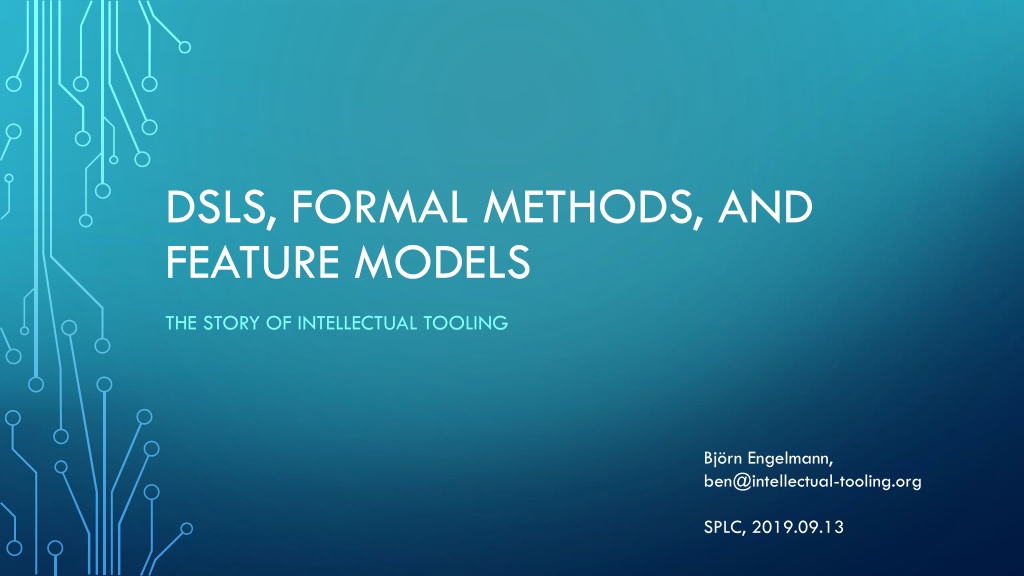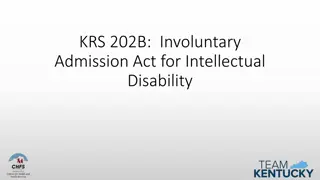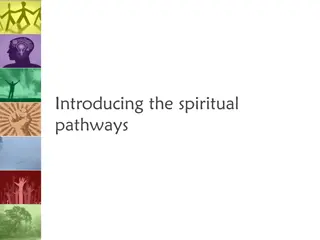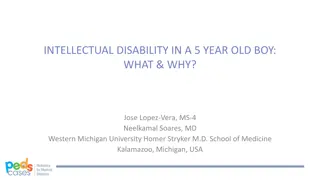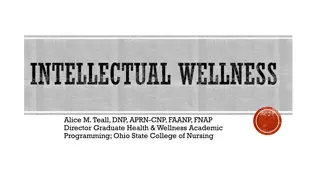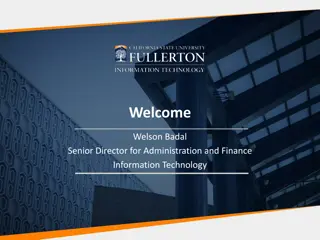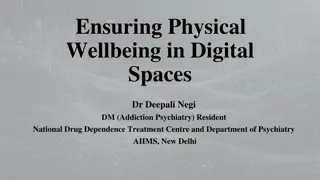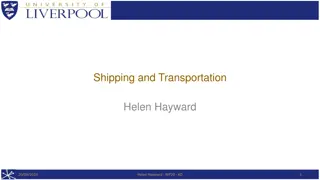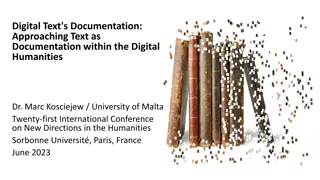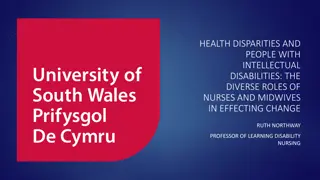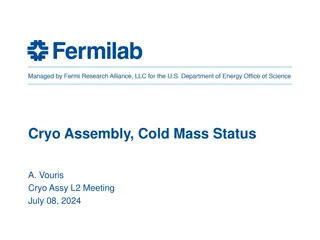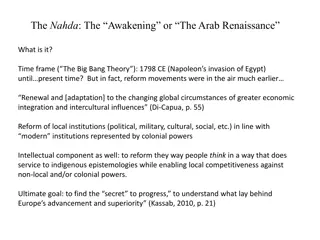Evolution of Tooling: From Physical to Digital Intellectual Enhancements
Delve into the evolution of tooling from physical implements like spears and hammers to digital intellectual enhancements through software engineering, DSLS, and MDSD. Explore the progression of tools from mere physical aids to sophisticated intellectual aids that augment human abilities in communication, invention, reasoning, and creativity.
Download Presentation

Please find below an Image/Link to download the presentation.
The content on the website is provided AS IS for your information and personal use only. It may not be sold, licensed, or shared on other websites without obtaining consent from the author. Download presentation by click this link. If you encounter any issues during the download, it is possible that the publisher has removed the file from their server.
E N D
Presentation Transcript
DSLS, FORMAL METHODS, AND FEATURE MODELS THE STORY OF INTELLECTUAL TOOLING Bj rn Engelmann, ben@intellectual-tooling.org SPLC, 2019.09.13
TOOLING use Goal Tool
TOOLING use build invent Goal Tool Concept
TOOLING communicate trade use build invent Goal Tool Concept
2 Mio years ago TOOLING communicate trade use build invent Goal Tool Concept improve
CHAINS OF TOOLS Spear Bags Hammer Knife Leather Shoes Clothes
PHYSICAL TOOLING & INTELLECTUAL TOOLING Improves our physical abilites Strength (Hammer) Periliousness (Knife) Speed (Spear) Range (Bow) Improves our intellectual abilites Memory (Writing) Communication (Language, Writing, Smoke Signalling) Abstraction (Mathematics) Reasoning (Logic) Creativity (SCAMPER)
2000 years ago (INTELLECTUAL) TOOLING communicate trade use build invent Goal Tool Concept improve improve
100 years ago SOFTWARE = DIGITAL INTELLECTUAL TOOLING communicate copy(A) use(A) build invent Goal Program Concept
100 years ago SOFTWARE = DIGITAL INTELLECTUAL TOOLING communicate copy(A) use(A) build invent Goal Program Concept improve improve
Editor / IDE - Syntax Highlighting - Code Completion - Refactorings - SOFTWARE ENGINEERING Continuous Integration Type System VersionControl Interpreter Debugger Profiler Build System Language Package Manager Analysis / Verification Synthesis / Partial Evaluation Libraries
Software Engineering MDSD & DSLS Tooling generalize Language Workbench Engineering specialize DSL specialize specialize DSL DSL BioChemistry Variability
10 years ago Software Engineering MDSD & DSLS Tooling generalize Language Workbench Engineering specialize DSL specialize specialize Marc Andreesen, Software is eating the world! DSL DSL BioChemistry Variability
WHERE TO GO FROM HERE? Is our current (digital) Intellectual Tooling sufficient?
WHERE TO GO FROM HERE? Is our current (digital) Intellectual Tooling sufficient? Program Language Language Workbench
WHERE TO GO FROM HERE? Is our current (digital) Intellectual Tooling sufficient? Program Language Language Workbench Handling Complexity with Confidence Formal Methods
ADVANTAGES DSLs + Formal Methods Domain-Specificity + Accessibility + Utility Utility = Handling Complexity with Confidence. Accessibility = User do not need a degree in FM. Domain-Specificity = Applicable to other Domains than SE.
DIVISION OF LABOUR (ACCESSIBILITY) User DSL Language Engineer Semantics Formal Method
Software Engineering FORMAL METHODS & Domain-Specificity Def: Any method to formally establish the correctness of a program. generalize Def: Any method to formally establish well-defined properties of a model. specialize specialize Variability Establishing Absence of Dead Features in a Feature Model. Establishing Deadlock-Freedom in a Business Process. Business Process Modeling
ARCHITECTURE DSL2 DSL1 DSL3 DSL4 Semantics Semantics Semantics Semantics FM Integration FM Integration FM Integration FM Integration SMT Solver SMT Solver Model Checler Probabilistic Model Checler
ARCHITECTURE User Reduce Redundant Effort Provide Common Infrastructure Expression Language Simplify Integration of FM Foster Adoption DSLs Semantics FM Integration SMT Solver Probabilistic Model Checler Model Checler
ARCHITECTURE User DSLs Domain Knowledge / Language Engineering Semantics FM Integration Formal Methods SMT Solver Probabilistic Model Checler Model Checler
ARCHITECTURE Model Language Semantics Domain-specific Properties Language Engineer SolverTask Logic Encoding Formal Methods Specialist SMTLIB / Promela /
LESSONS LEARNED (DEVELOPMENT) Build a team! (Do not attempt this alone) Challenge: Reaching Above-Human Levels of Confidence Chose your Components wisely Offer it for free (Make it Open Source, if possible) Find Real-world users for Beta-Testing Colleagues are not Users
LESSONS LEARNED (INDUSTRIAL APPLICATION) Test your Scalability! (S) Features you offer will be used (S) Significance ( purely academic excercise vs. Bare necessity ) Usability is key (S) Talk to the Customer first Understand needs and expectations Explain the solution without technical details (S)
PROJECT: INTELLECTUAL-TOOLING.ORG (currently under construction) Developing a Framework for Building Formal Method-enabled DSLs Think: Formal Language Workbench Demos Feature Models (in progress) BPMN Security Robotics (small) Group of Individuals Sharing the Vision to Advance Intellectual Tooling Language Engineering & Formal Methods Know-How BUT: Lack of Domain Knowledge Domain Knowledge Formal Methods Language Engineering
SUMMARY Think Big! You are Intellectual Tooling Experts! Let s connect! (intellectual-tooling.org)
CHALLENGES AHEAD OF US Car Connected, Self-Driving Car; Airplane Drone Distributed Swarm of Autonomous Cyber-Physical Systems Hard Safety Requirements Hard Real-time Requirements Peer-to-peer BlockchainDistributed, Crypto-System Timing Requirements Game-Theoretic Requirements (Incentives) High Correctness Requirements (Financial Loss) Gene-Manipulation, Algo-Trading, Cyber-Security
CURRENT SITUATION Increasing Complexity => Increasing Risk of Failure Increasing Criticality of Requirements => Increasing the Impact of Failure
CURRENT SITUATION Increasing Complexity => Increasing Risk of Failure Increasing Criticality of Requirements => Increasing the Impact of Failure
HANDLING COMPLEXITY Problems Scarcity of Reviewers Time-consuming Social Phaenomena Interaction between Reviewer and Author Relationship between the two Admiration Organizational Roles Human Limitations Tiredness Distractedness Lack of Motivation Review
WHAT KIND OF PROBLEMS WILL WE BE DEALING WITH IN THE FUTURE? Complexity for humans Digitalization Machine Learning Complexity for computers
WHAT KIND OF PROBLEMS WILL WE BE DEALING WITH IN THE FUTURE? Complexity for humans Advanced Intellectual Tooling Digitalization Machine Learning Complexity for computers
EXAMPLE 1 includes FeatureModels Expressions
EXAMPLE 1 Expressions extends - - Restrict (no Lambdas) Extend by References to - Features - Attributes includes FeatureModels
EXAMPLE 1 Expressions extends - - Restrict (no Lambdas) Extend by References to - Features - Attributes includes FeatureModels Semantics of Expression Semantics of Expressions with References Semantics of FeatureModels includes extends
EXAMPLE 2 FeatureModels BusinessProcesses references PresenceConditions
EXAMPLE 2 FeatureModels BusinessProcesses extends references BusinessProcesses With PresenceConditions extends PresenceConditions
EXAMPLE 2 FeatureModels BusinessProcesses extends references Deadlock- Freedom BusinessProcesses With PresenceConditions extends PresenceConditions extends Deadlock- Freedom for all Variants X For all Variants: X extends
